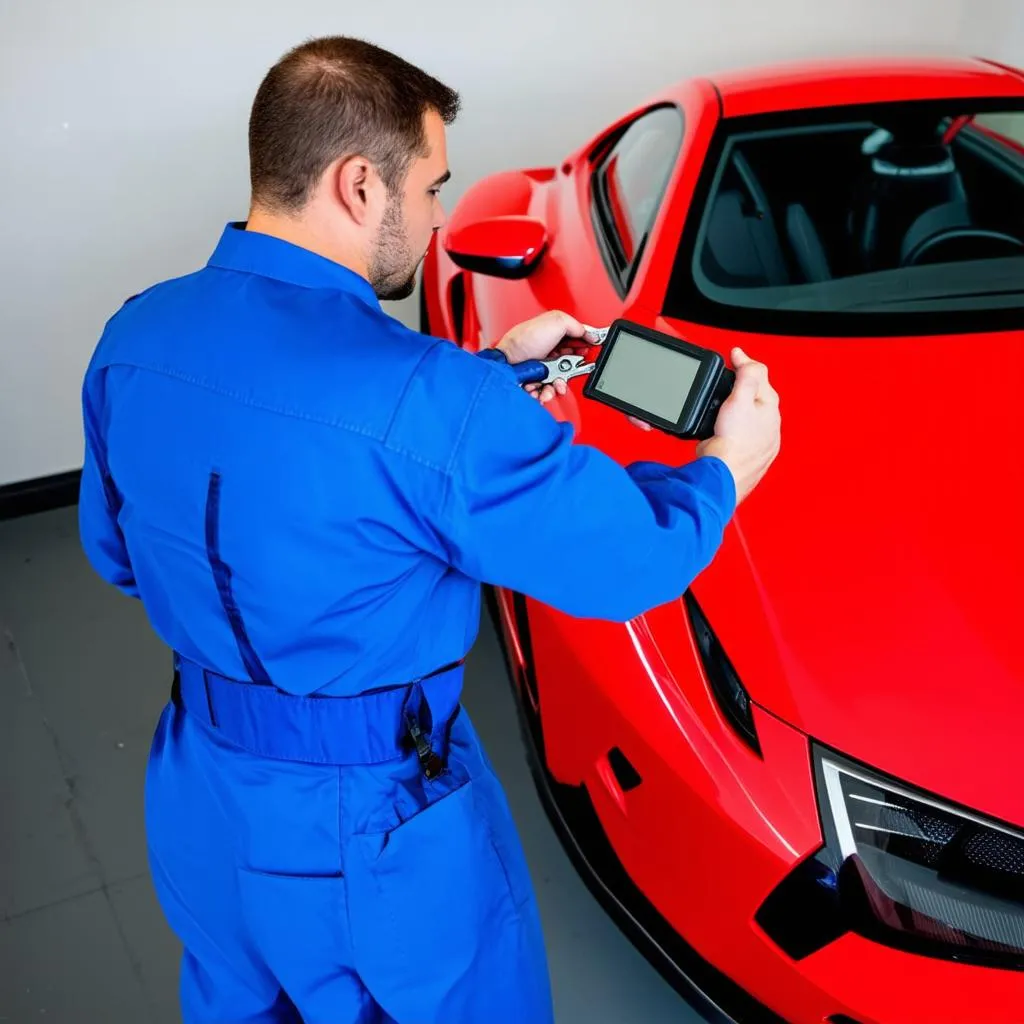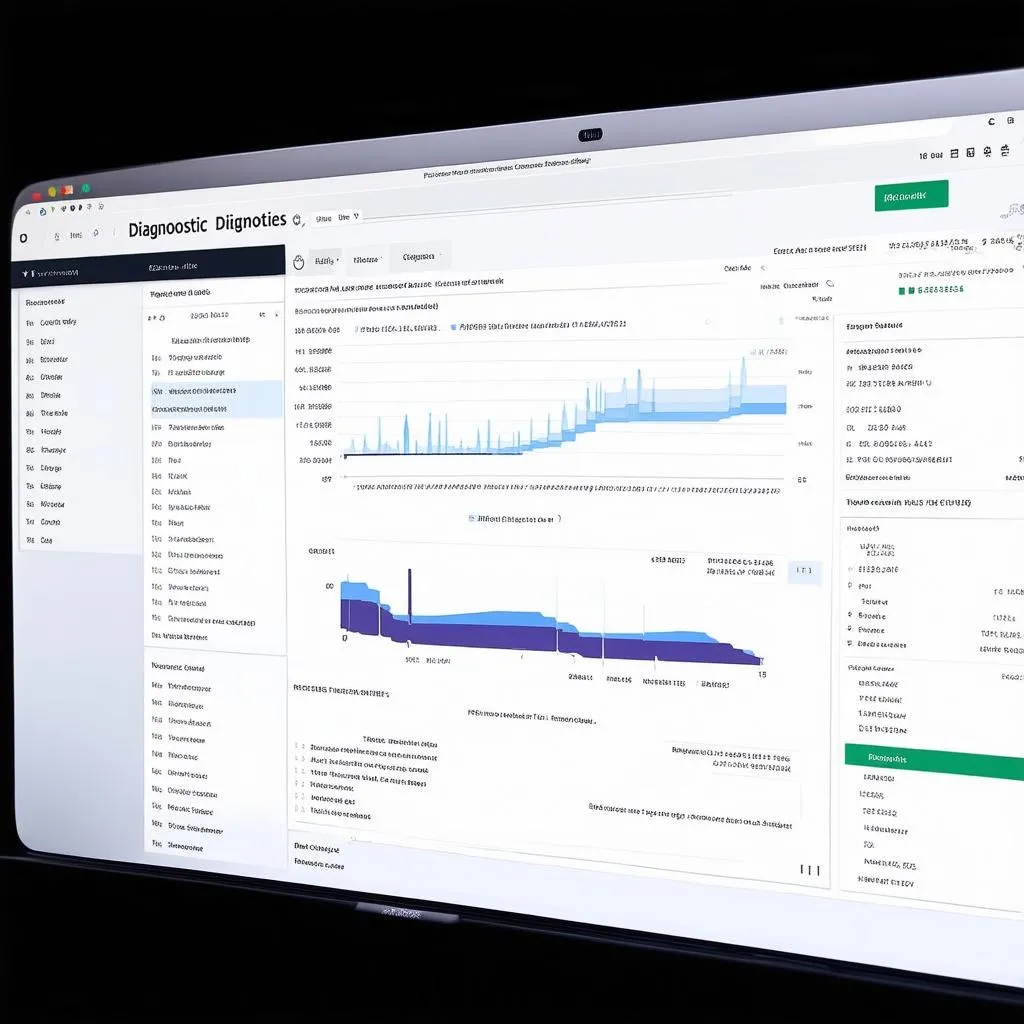Ever feel like your car is speaking a language you don’t understand? Those cryptic dashboard lights, the occasional shudder… It’s enough to make any car owner feel powerless. But what if you could speak your car’s language? That’s where OBD2 bi-directional scan tools come in. These aren’t your grandfather’s simple code readers, these are powerful diagnostic tools that can unlock your car’s deepest secrets and put you back in the driver’s seat.
What’s all the Fuss About OBD2 Bi-Directional Scan Tools?
Let’s break it down. Imagine you take your car to the mechanic because the “Check Engine” light is glaring at you. The mechanic plugs in a scanner, runs a diagnostic, and tells you it’s the oxygen sensor. Easy, right? Now, imagine you could do that yourself, but even better.
That’s the power of a bi-directional scan tool. It’s like having a direct line to your car’s computer, allowing you to:
- Read and Clear Diagnostic Trouble Codes (DTCs): See exactly what’s triggering that pesky “Check Engine” light and clear it once the problem is fixed.
- View Live Data Streams: Want to know your engine coolant temperature in real-time or how your oxygen sensors are performing? Now you can.
- Perform Advanced Functions: Here’s where things get really interesting. With a bi-directional tool, you can actuate components like fuel injectors, ABS solenoids, and even run system tests.
But let’s be honest, choosing the right bi-directional scan tool can feel like navigating a maze. That’s why we’re here to guide you.
Choosing the Right Tool: Finding Your Perfect Match
The search for the “best” anything can be overwhelming, and bi-directional scan tools are no exception. The truth is, the “best” tool is the one that best suits your needs.
Ask Yourself These Questions:
- What kind of cars do you work on? Some tools are designed for specific makes and models, while others offer broader coverage.
- What’s your budget? Tools range from affordable options for DIYers to professional-grade units with a price tag to match.
- What features are important to you? Consider factors like user-friendliness, software updates, and technical support.
Top Features to Look For:
- Bi-directional Control: This is the heart of it all. Ensure the tool can send commands to your car’s systems, not just read data.
- Comprehensive Vehicle Coverage: Look for a tool that supports a wide range of vehicle makes and models, especially if you work on different cars.
- User-Friendly Interface: A tool is only as good as its interface. Choose one with a clear layout, easy navigation, and intuitive software.
- Regular Software Updates: The automotive world is constantly evolving. Choose a tool that receives regular software updates to stay compatible with newer vehicles.
- Reliable Technical Support: Having access to knowledgeable technical support can be a lifesaver when you encounter issues.
Beyond the Basics: Exploring Advanced Features
Ready to take your diagnostics to the next level? Some high-end bi-directional scan tools offer:
- Coding and Programming: This lets you modify certain vehicle settings, like tire size or key fobs.
- Guided Troubleshooting: These tools guide you through diagnostic procedures step-by-step.
- Advanced Network Diagnostics: These are essential for diagnosing complex network communication issues.
The Spiritual Side of Cars: More Than Meets the Eye
You might be surprised to learn that in some cultures, cars are seen as more than just machines. They’re believed to possess a kind of energy, reflecting the owner’s personality and even influencing their fortune. While we won’t delve into rituals or superstitions, there’s something to be said for the connection between a driver and their car. A bi-directional scan tool, in a way, deepens this connection. It allows you to understand your car’s “language” and keep it running smoothly, ensuring a safe and harmonious journey.
 Mechanic using a bi-directional scan tool
Mechanic using a bi-directional scan tool
FAQs: Answering Your Burning Questions
Q: Do I need a bi-directional scan tool, or will a basic code reader suffice?
A: A basic code reader can be helpful for reading and clearing basic DTCs. However, if you want to perform more advanced functions, such as component activation or system tests, you’ll need a bi-directional scan tool.
Q: Can I use a bi-directional scan tool to program new keys?
A: Some bi-directional scan tools offer key programming capabilities, but not all of them do. Check the tool’s specifications to see if this feature is included.
Q: Are there any risks associated with using a bi-directional scan tool?
A: If used improperly, a bi-directional scan tool could potentially cause damage to your vehicle’s electrical system. It’s crucial to familiarize yourself with the tool’s instructions and understand the functions you’re using.
Q: What are some common issues that a bi-directional scan tool can help me diagnose?
A: A bi-directional scan tool can help diagnose a wide range of issues, from engine misfires and transmission problems to ABS faults and airbag system malfunctions.
Explore Further: Resources for Car Enthusiasts
Looking for more information about your specific car model? Check out our detailed guides on OBD ports and diagnostic procedures:
- 2014 Ram 2500 Cummins OBD Style
- 2006 Lexus GS 430 OBD-2 Layout
- Ford 1999 F250 Super Duty Diesel OBD Connection
Ready to Take Control?
Investing in a quality OBD2 bi-directional scan tool is an investment in your peace of mind. It empowers you to take control of your car’s health, troubleshoot problems, and potentially save money on costly mechanic visits.
 Car diagnostic software displayed on a laptop screen
Car diagnostic software displayed on a laptop screen
Need help choosing the right tool or navigating the world of automotive diagnostics? Contact us on WhatsApp at +84767531508. Our team of auto experts is available 24/7 to assist you.
Drive Confidently, Drive Empowered
Remember, knowledge is power. By understanding your car’s inner workings, you can ensure it runs smoothly for years to come.
What are your experiences with car diagnostics? Share your thoughts and questions in the comments below!